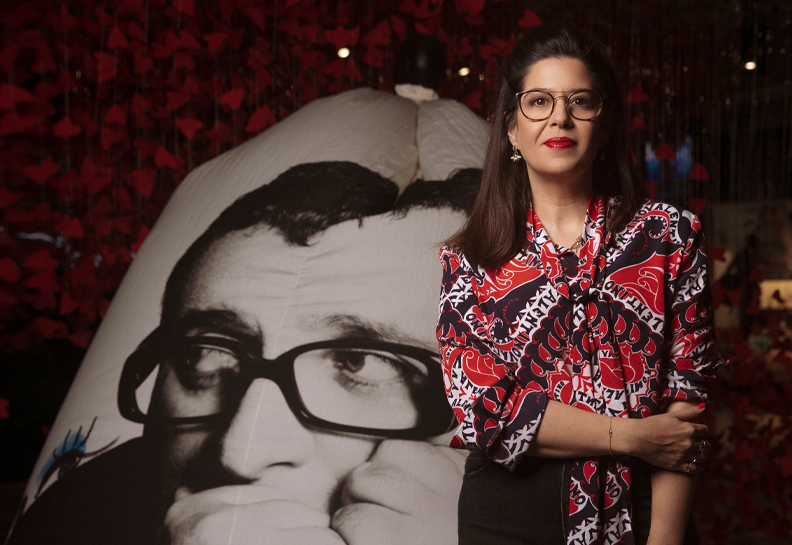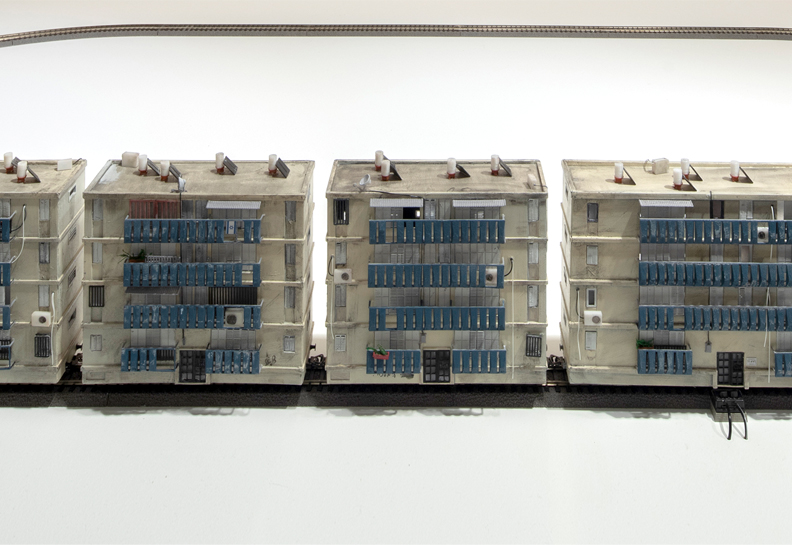Innovation Through Design Thinking is a book about design thinking; it is located in design practice, emerges from Israeli design.
 photo: Victor Frostig
photo: Victor Frostig
“Innovation Processes Through Design Thinking” a book about design thinking; it is immersed within Design practice, emerges from Israeli Design, and is written by a designer who lives within the milieu of local and international Design. A book of this kind is not a common product and experience in our locale. Ezri Tarazi, designer, a man of action, initiative, and ideation, brings to the Hebrew reader a book that engages in the theory and practice of design; a book that is directed not only to designers, but to anyone who is unfamiliar with the world of thinking and creating that comprise design practice.
In the Modern Era, thinking and practice are considered discrete, the academic ivory tower is entrenched in logical thinking (bio-logy, psycho-logy, socio-logy), whereas our experience in everyday life is that thinking is always bound up in practice, and they create and shape one another. Design thinking, the book’s subject, deviates from what is accepted in the world of science, engineering, technology, and even business management. In other words, it deviates from rational, quantitative, binary, and linear ways of thinking; it is an alternative way of thinking grounded in the complexities of life rather than in universal logic. It does not oppose the accepted, but deviates from restricting frameworks. It is also consciously eclectic, it is not rational, nor is it linear, everything the ivory tower rejects and everything that gains expression in life.
Design deviates from the quantitative world of the modern economist, from the world of the businessman whose sole interest is in quantitative achievements, who sees the individual in the narrow perspective of a consumer. This is design that deviates from the perception that views the designer as someone engaged in the esthetics of products, in visual forms whose importance is secondary to the technological function developed by engineers. This is design that is not merely a service, but a way of thinking that is not only philosophical, but rather a way of integrated thinking, creating, and practice. Design thinking that deviates from the limited lot of designers and becomes a way of creating and a way of life.
The book contends with these changes in the understanding of Design and presents a different reality wherein qualities are no less important than quantitative data; a reality wherein the individual is perceived as a complex being whose experiences are the object of design; design that possesses meanings and has effects beyond visual perception, and engages in the shaping of reality from birth and throughout our life. To use the metaphor around which the book is structured, design takes place throughout the agricultural life cycle, in plowing, sowing, germination, budding, blossoming, ripening, and harvesting. Seven stages of the design thinking process, a process intended to renew and create the goods we desire; goods that are objects, services, and experiences.
Tarazi was born and raised in Jerusalem, designed in and by the unique reality of this historical-modern city. He is well acquainted with Jewish tradition, evolving modern-day Israeli discourse, and at the same time conducts an international dialogue. Forging connections for the benefit of the world of Design and Bezalel Academy, where he studied, taught, headed the BA Industrial Design program, and developed and ran the MA program. This impressive résumé is interwoven throughout the book both in its style and content. It is a book about modern design that cites biblical and traditional sources, and “Havruta” (lit. friendship, companionship) is the name of one of the methods Tarazi is developing, a connection that can only take place here in Israel. Israeli reality too, the mentality of people engaged in business, industry, engineering, and design are manifested in the case studies and dozens of stories interspersed in the book’s chapters. It is without doubt a book that could only have been written here, a mirror of design reality in Israel. When reading the book, Israeli designers will feel like natural partners in the story. The book is the story of the work of designers and their unique work processes; design processes that are currently gaining considerable interest in the business and entrepreneurship world. This interest is manifested in courses and academic programs, work procedures, and businesses that incorporate design thinking processes.
It is ostensibly a book about design methodology, the logics of design practice, but in fact it is more about methods and intuitions. Simply because it is impossible to confine designers within a methodology, or to be more precise, designers are not restricted to the logical. The deviation from rational, methodo-logical and techno-logical thinking and practice distances designers from the logical consensus, and brings them closer to the world of art. In this respect they constitute a link between the opposing worlds of science and art. Creativity and intuition are not inherent in accepted thinking and practice, but times have changed, and this book, which presents ways of design thinking, can indeed appeal to a wider audience which understands that the change that can be brought about by design is highly meaningful.
In order to describe and illustrate design thinking, the book is accompanied by and built on citations from life rather than books. The practice cited and accumulated throughout the book possesses far more significant validity than any citation from a book, which is the accepted academic format. Design thinking as a whole deviates from what is accepted in the ivory tower and thus, for example, while building models, meditation, games, and other non-rational activities will not be recognized by the academic establishment as possessing equal value to academic research, they are much more creative and fertile. Here lies the uniqueness of design thinking, which shapes and creates not by means of a standalone philosophical theory, but thinking that is incorporated into practice.
Another deviation from the academic format is manifested in the book’s design, which combines the text with verbal and visual remarks, which are perceived as inherent to the content and reading experience. This deviation too can be seen as alluding to the nature of design thinking. The essence of the book, as well as the essence of design processes, is the incorporation of all the possible means in the process of design thinking. There is no separation between verbal and visual, between thinking, behavior, and practice, and the aim is the experience that leads to understanding and emotion, and all means are valid and equal. In this regard I would mention the words of designer Kenya Hara: “Verbalizing design is another act of design”. Design is not media-limited, people are not interested in objects, but in the experiences they create. As such, design does not emerge solely from or appeal to the rational, the functional, but especially to what lies beyond intellect, it is intended to entice, move, and add spice to life.
The metaphor of agricultural life cycles that Tarazi employs takes us back to the origins of culture. The word “cultura” originates from the Latin and means “to cultivate” or “cultivation” (hence “agriculture” = cultivation of field crops), culture in the sense of creating change by natural, organic means. Design that is connected to culture deviates from the rational, mechanistic, engineering processes, and interweaves processes of birth, growth, and creativity that are integrated in the character of people and their surroundings. The concepts we choose to describe what we do are an integral part of ways of thinking that lead to creativity and understanding of the products. In relevant places Tarazi incorporates concepts and criteria that can help, and become an inseparable part of design thinking processes. Concepts such as design brief, what is good design, types of innovation, types of design research, creative processes, states of experience, design as a mediator, and so forth; concepts that are formulated from within the theory and practice of Tarazi and his fellow designers.
The human dimension becomes the principal dimension in design thinking; if in the past it seemed that designers engaged in objects, the change indicated here is the shift of design toward human experience. Experience Design includes interwoven physical, social, and cultural dimensions. This book, which is grounded in industrial design, in product design, opens a way toward design that is beyond, design that endows the object with its whole story, and as we can see in the numerous examples contained in the book, ignoring the narrative and experiential dimensions often results in the failure of interesting product design projects. Design thinking is not a recipe for success, but rather the opening of a window for new possibilities, and from now on it is all in the hands, the imagination, and the initiative of those engaging in the work.
We are accustomed to seeing design books as books of pictures, coffee table books, books that are leafed through rather than read; here we have a design book that merits reading. It is a book that broadens and deepens the picture of design in general, and of Israeli Design in particular. It outlines ways of acting, behaving, and thinking toward the future, it provides tools for designing the objects, the services, and the experiences that will be ours.




